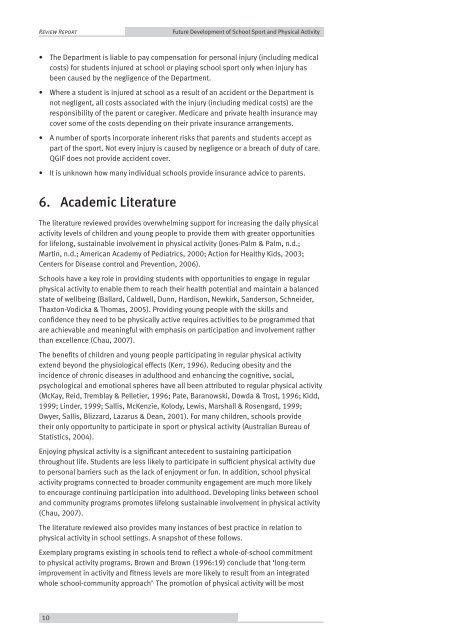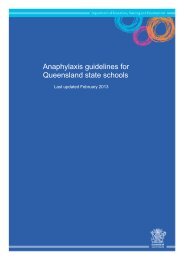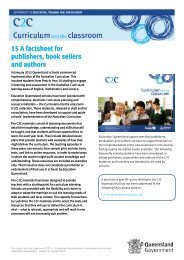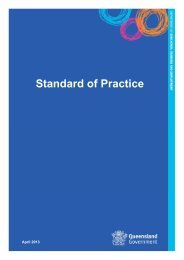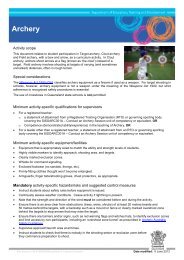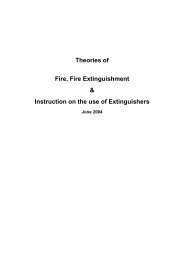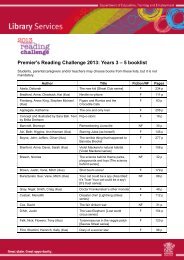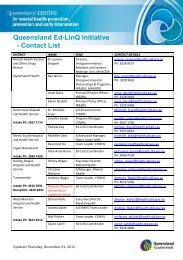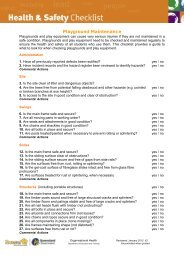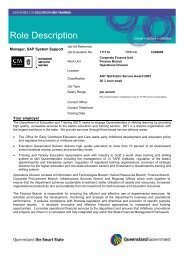Future Development of School Sport - Education Queensland ...
Future Development of School Sport - Education Queensland ...
Future Development of School Sport - Education Queensland ...
You also want an ePaper? Increase the reach of your titles
YUMPU automatically turns print PDFs into web optimized ePapers that Google loves.
Review Report <strong>Future</strong> <strong>Development</strong> <strong>of</strong> <strong>School</strong> <strong>Sport</strong> and Phys cal Act v ty<br />
• The Department s l able to pay compensat on for personal njury ( nclud ng med cal<br />
costs) for students njured at school or play ng school sport only when njury has<br />
been caused by the negl gence <strong>of</strong> the Department.<br />
• Where a student s njured at school as a result <strong>of</strong> an acc dent or the Department s<br />
not negl gent, all costs assoc ated w th the njury ( nclud ng med cal costs) are the<br />
respons b l ty <strong>of</strong> the parent or careg ver. Med care and pr vate health nsurance may<br />
cover some <strong>of</strong> the costs depend ng on the r pr vate nsurance arrangements.<br />
• A number <strong>of</strong> sports ncorporate nherent r sks that parents and students accept as<br />
part <strong>of</strong> the sport. Not every njury s caused by negl gence or a breach <strong>of</strong> duty <strong>of</strong> care.<br />
QGIF does not prov de acc dent cover.<br />
• It s unknown how many nd v dual schools prov de nsurance adv ce to parents.<br />
6. Academic Literature<br />
The l terature rev ewed prov des overwhelm ng support for ncreas ng the da ly phys cal<br />
act v ty levels <strong>of</strong> ch ldren and young people to prov de them w th greater opportun t es<br />
for l felong, susta nable nvolvement n phys cal act v ty (Jones-Palm & Palm, n.d.;<br />
Mart n, n.d.; Amer can Academy <strong>of</strong> Ped atr cs, 2000; Act on for Healthy K ds, 2003;<br />
Centers for D sease control and Prevent on, 2006).<br />
<strong>School</strong>s have a key role n prov d ng students w th opportun t es to engage n regular<br />
phys cal act v ty to enable them to reach the r health potent al and ma nta n a balanced<br />
state <strong>of</strong> wellbe ng (Ballard, Caldwell, Dunn, Hard son, Newk rk, Sanderson, Schne der,<br />
Thaxton-Vod cka & Thomas, 2005). Prov d ng young people w th the sk lls and<br />
confidence they need to be phys cally act ve requ res act v t es to be programmed that<br />
are ach evable and mean ngful w th emphas s on part c pat on and nvolvement rather<br />
than excellence (Chau, 2007).<br />
The benefits <strong>of</strong> ch ldren and young people part c pat ng n regular phys cal act v ty<br />
extend beyond the phys olog cal effects (Kerr, 1996). Reduc ng obes ty and the<br />
nc dence <strong>of</strong> chron c d seases n adulthood and enhanc ng the cogn t ve, soc al,<br />
psycholog cal and emot onal spheres have all been attr buted to regular phys cal act v ty<br />
(McKay, Re d, Tremblay & Pellet er, 1996; Pate, Baranowsk , Dowda & Trost, 1996; K dd,<br />
1999; L nder, 1999; Sall s, McKenz e, Kolody, Lew s, Marshall & Rosengard, 1999;<br />
Dwyer, Sall s, Bl zzard, Lazarus & Dean, 2001). For many ch ldren, schools prov de<br />
the r only opportun ty to part c pate n sport or phys cal act v ty (Austral an Bureau <strong>of</strong><br />
Stat st cs, 2004).<br />
Enjoy ng phys cal act v ty s a s gn ficant antecedent to susta n ng part c pat on<br />
throughout l fe. Students are less l kely to part c pate n suffic ent phys cal act v ty due<br />
to personal barr ers such as the lack <strong>of</strong> enjoyment or fun. In add t on, school phys cal<br />
act v ty programs connected to broader commun ty engagement are much more l kely<br />
to encourage cont nu ng part c pat on nto adulthood. Develop ng l nks between school<br />
and commun ty programs promotes l felong susta nable nvolvement n phys cal act v ty<br />
(Chau, 2007).<br />
The l terature rev ewed also prov des many nstances <strong>of</strong> best pract ce n relat on to<br />
phys cal act v ty n school sett ngs. A snapshot <strong>of</strong> these follows.<br />
Exemplary programs ex st ng n schools tend to reflect a whole-<strong>of</strong>-school comm tment<br />
to phys cal act v ty programs. Brown and Brown (1996:19) conclude that ‘long-term<br />
mprovement n act v ty and fitness levels are more l kely to result from an ntegrated<br />
whole school-commun ty approach’ . The promot on <strong>of</strong> phys cal act v ty w ll be most<br />
10


